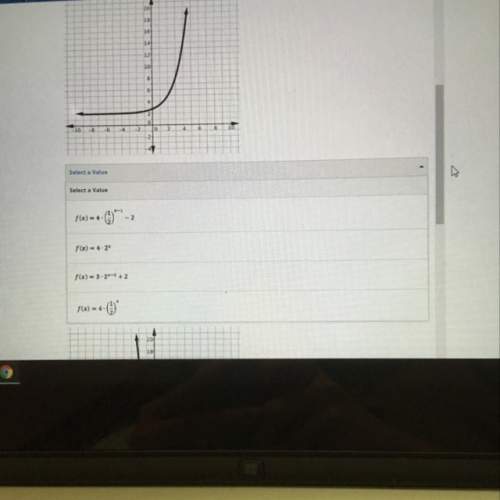
Mathematics, 08.10.2020 01:01 bgarrison364
The function h(x) is given below. h(x) = {(3, –5), (5, –7), (6, –9), (10, –12), (12, –16)} Which of the following gives h–1(x)? {(3, 5), (5, 7), (6, 9), (10, 12), (12, 16)} {(–5, 3), (–7, 5), (–9, 6), (–12, 10), (–16, 12)} {(3, –5), (5, –7), (6, –9), (10, –12), (12, –16)} {(5, 3), (7, 5), (9, 6), (12, 10), (16, 12)}

Answers: 2
Another question on Mathematics

Mathematics, 21.06.2019 15:00
Suppose a ball is dropped fromca height of 6ft. it bounces back up but time it bounces, it reaches only 7/10 of its pervious height. what is the total of each height that the ball reaches after 5 bounces
Answers: 1

Mathematics, 21.06.2019 17:20
Aboat costs 19200 and decreases in value by 12% per year. how much will it cost in 5 years
Answers: 2

Mathematics, 21.06.2019 18:40
Which expression gives you the distance between the points (5,1)and(9,-6)
Answers: 2

Mathematics, 21.06.2019 20:00
15m is what percent of 60m; 3m; 30m; 1.5 km? the last one is km not m
Answers: 1
You know the right answer?
The function h(x) is given below. h(x) = {(3, –5), (5, –7), (6, –9), (10, –12), (12, –16)} Which of...
Questions



Mathematics, 28.08.2019 18:30



Mathematics, 28.08.2019 18:30

Mathematics, 28.08.2019 18:30




Mathematics, 28.08.2019 18:30

History, 28.08.2019 18:30


English, 28.08.2019 18:30


Geography, 28.08.2019 18:30



Mathematics, 28.08.2019 18:30




